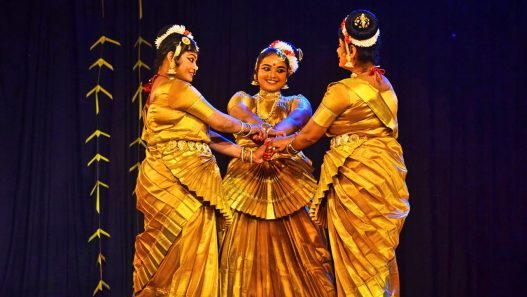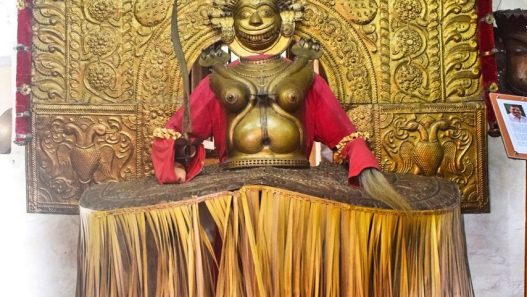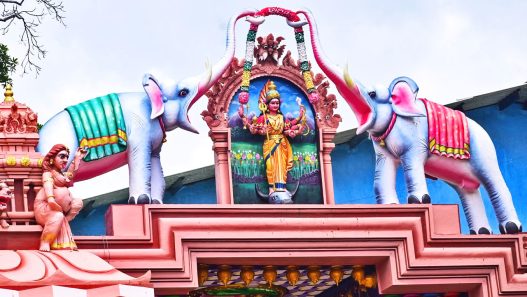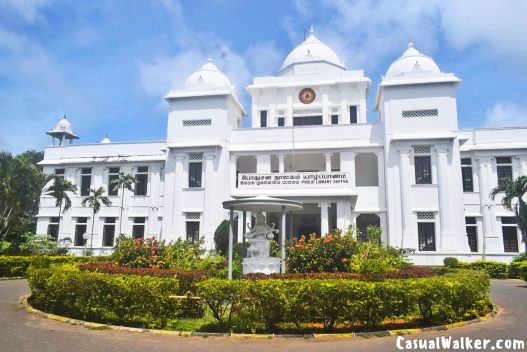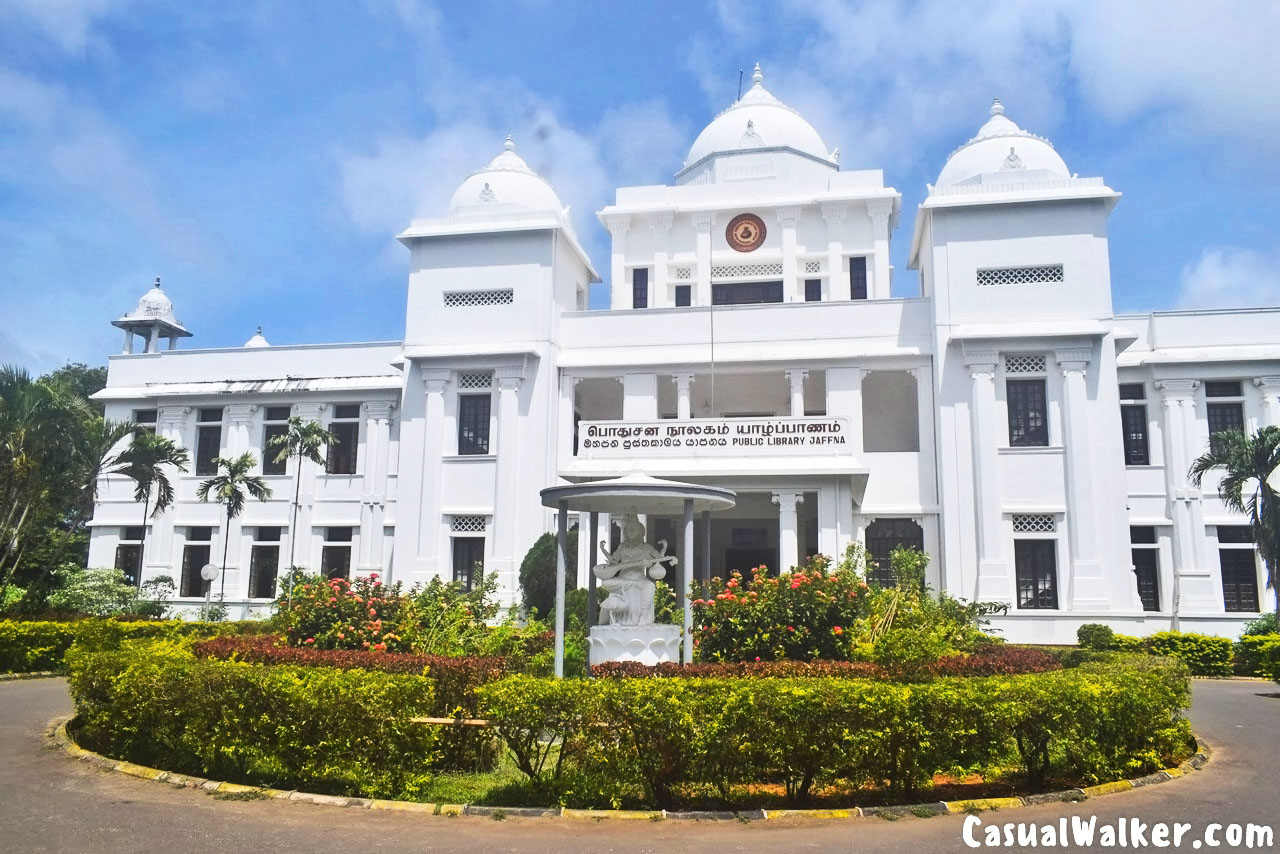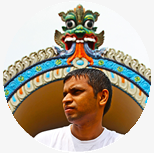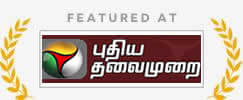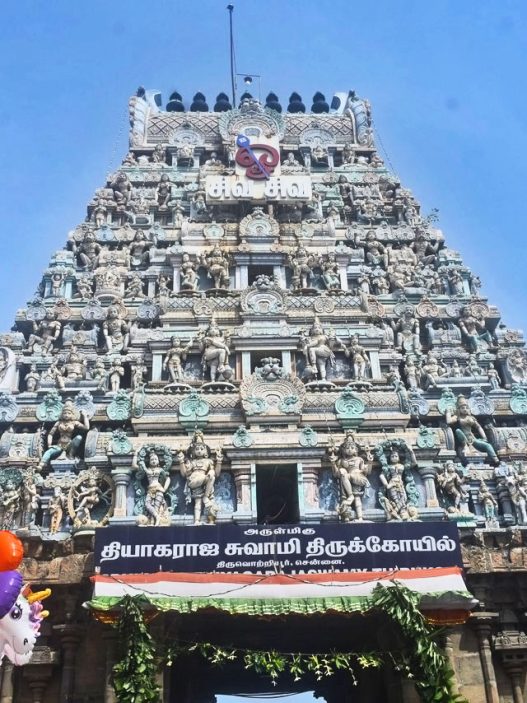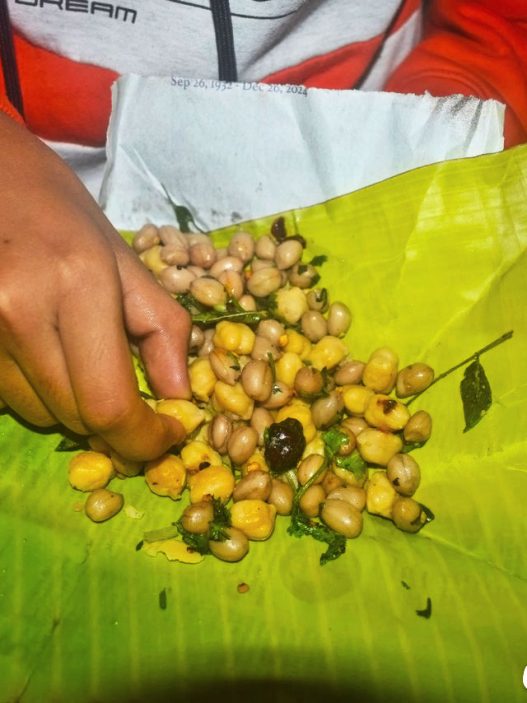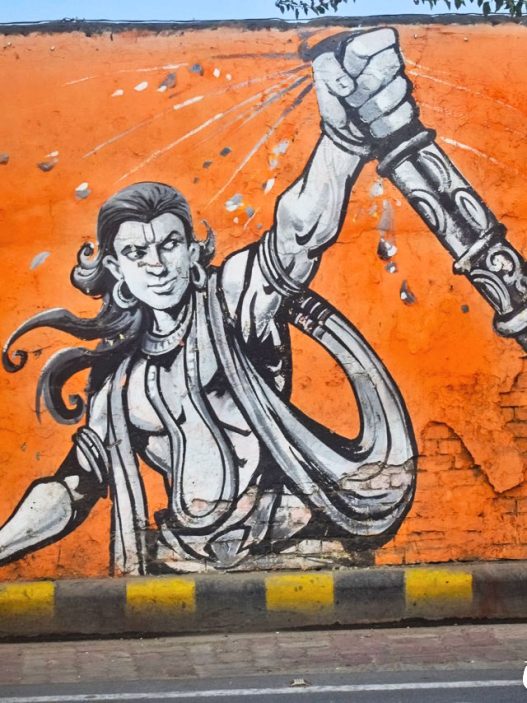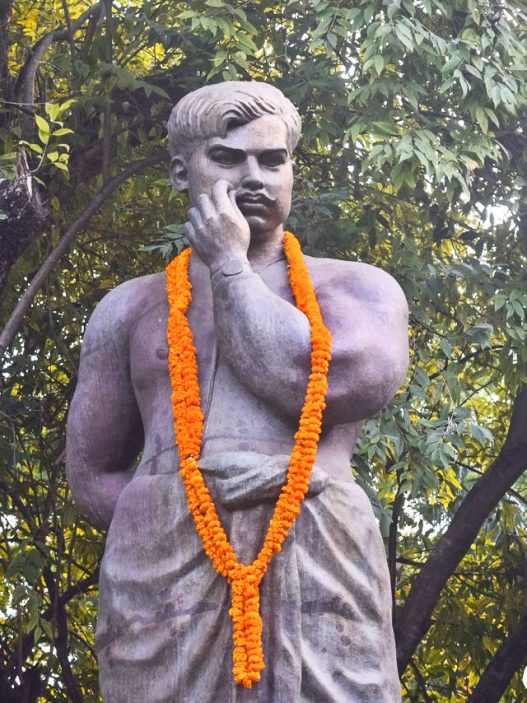Jaffna Public Library / Yalpanam Public library in Jaffna, Sri Lanka: A Symbol of Tamil Cultural Heritage & Resilience in Sri Lanka | One of the Biggest Libraries in Asia – Complete Visitor Guide 2025 | History, Architecture, Opening Hours/Timings, Contact Number
– discover the historic heart of tamil literature and culture in northern sri lanka
| CasualWalker’s Rating for Jaffna Public Library in Jaffna, Sri Lanka : |
 9.9 – Superb Awesome 9.9 – Superb Awesome |
The Jaffna Public Library (also known as Yalpanam Public Library), which stands as one of Sri Lanka’s most significant cultural landmarks and serves as a powerful symbol of Tamil heritage in the Northern Province. Located in Jaffna, the capital city of Sri Lanka’s Northern Province, this institution tells a story that goes far beyond books and manuscripts.
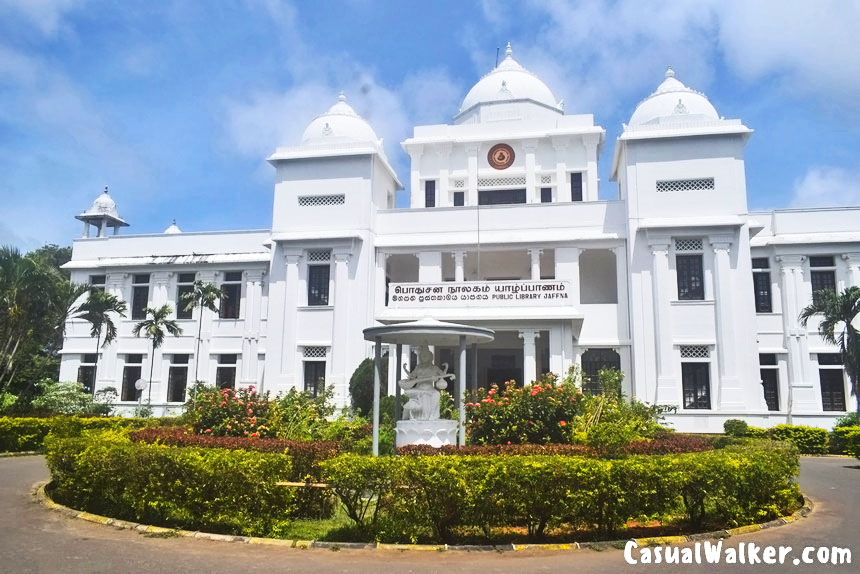
History of Jaffna Public Library / Yalpanam Public library
The Visionary Beginning (1933-1934)
What struck me most about the Jaffna Public Library’s origins was how it owes its existence to K.M. Chellappa from Achchuveli, a humble court clerk who transformed his personal book collection into a community resource. In 1933, Chellappa established a modest library in his own home, providing scholars and students with access to valuable literary resources – a gesture that deeply resonated with me.
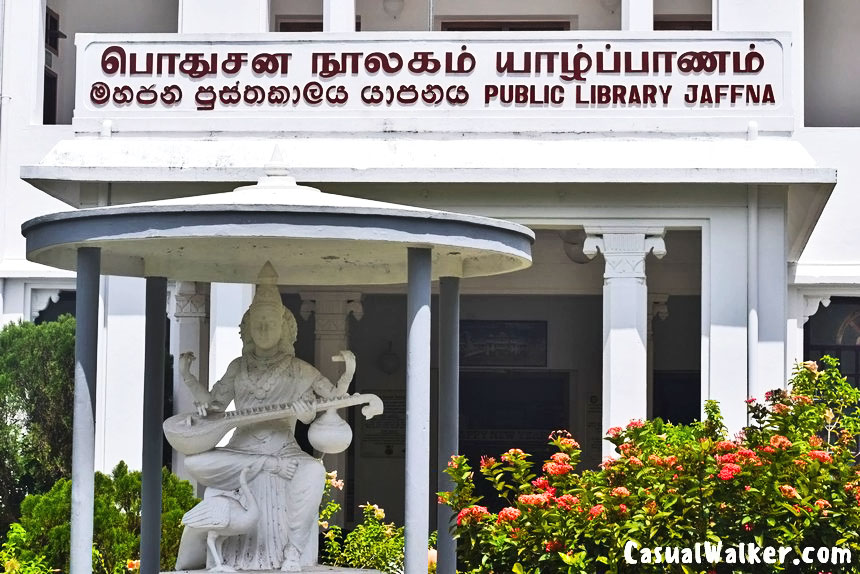
Chellappa recognized the growing demand for educational resources and collaborated with prominent Jaffna citizens to establish the Jaffna Public Library officially on August 1, 1934. Walking through the current premises, it was hard to imagine that this grand institution began operations in a rented room on Jaffna General Hospital Road with an initial collection of just 844 books and 36 periodicals.

Expansion and Growth (1936-1953)
The library’s increasing popularity and space constraints led to its relocation to a site near the Town Hall in 1936. The institution’s rapid growth attracted attention from notable scholars, priests, and community leaders who envisioned a world-class library facility.
Indian librarian S.R. Ranganathan, a pioneer in library science, provided expert recommendations to elevate the Jaffna Library to international standards. Renowned architect V.M. Narasimhan designed the new permanent structure, ensuring the building would reflect both functionality and cultural significance – something visitors can still appreciate today.
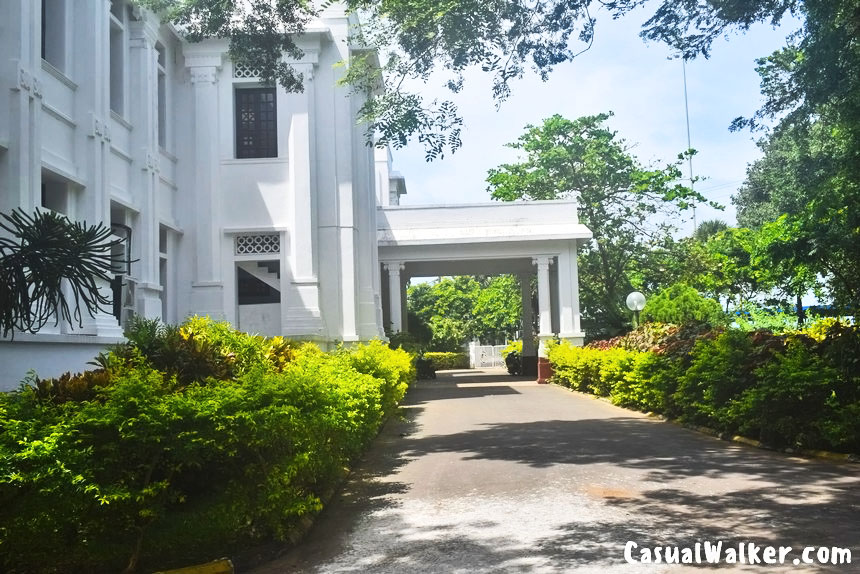
The Golden Era (1953-1981)
The foundation stone laying ceremony took place on March 29, 1953, marking the beginning of a new chapter. Alfred Duraiyappa, the Jaffna Mayor, officially inaugurated the first phase in 1959. The fully operational facility employed 33 professional librarians and expanded its services significantly.
Key developments during this period included
- 1967: Establishment of a dedicated children’s department
- 1971: Opening of an event hall for cultural programs, lectures, and seminars
- 1970s-1981: Peak collection of approximately 97,000 rare books and manuscripts.
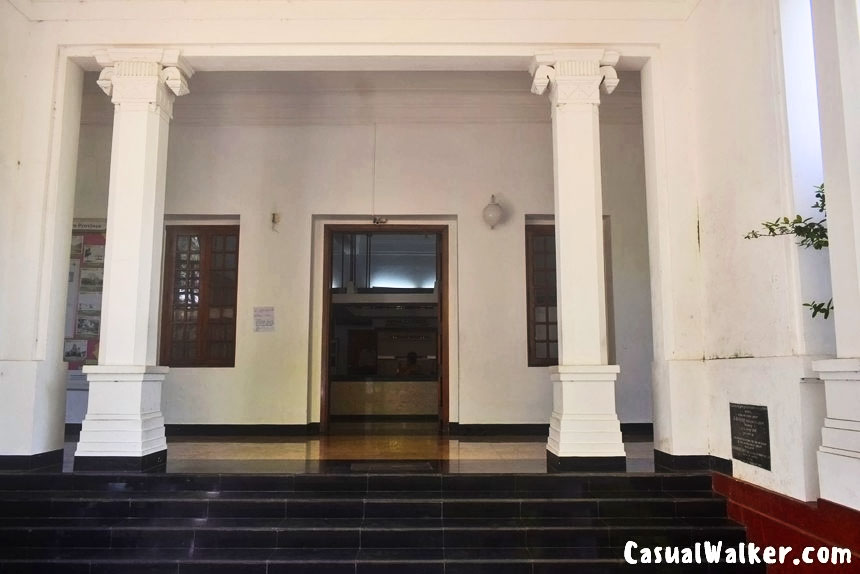
The Tragic Destruction: 1981 Fire Incident
On May 31, 1981, during escalating ethnic tensions in Sri Lanka, the Jaffna Public Library suffered a devastating attack, destroying centuries of irreplaceable Tamil cultural heritage. The destruction represented more than the loss of books; it symbolized an attempt to erase Tamil identity and cultural memory. This library was one of Asia’s largest libraries at the time of its destruction. The library housed:
- Ancient manuscripts dating back centuries
- Original newspapers from the 1800s published in Jaffna
- Historical documents unavailable anywhere else in the world
- Rare Tamil literature and scholarly works
- Archaeological research materials
The Irreplaceable Literary Treasures Lost
The Jaffna Public Library’s collection represented centuries of Tamil intellectual heritage, containing ancient palm leaf manuscripts that preserved classical Tamil poetry, religious texts, and philosophical treatises dating back to the medieval period. Among the most precious holdings were original copies of historical newspapers such as the “Uthaya Tharagai” and “Eelakesari,” published in Jaffna during the 1800s, which documented the social, political, and cultural evolution of Tamil society in northern Sri Lanka.
The devastating fire consumed the library’s globally acclaimed collection of over 97,000 volumes, including priceless Tamil manuscripts like the sole surviving copy of “Yalpana Vaipava Malai”—a comprehensive chronicle of Jaffna’s history. Among the losses were centuries-old palm leaf manuscripts and rare literary works that represented irreplaceable fragments of Tamil cultural heritage.
These newspapers contained firsthand accounts of colonial administration, local governance, community events, and literary contributions that were completely unique to the Jaffna region and existed nowhere else in the world. The library also housed rare Tamil literary works including unpublished manuscripts by local poets, scholars’ commentaries on classical texts, handwritten translations of Sanskrit works into Tamil, and original research papers on Tamil linguistics and literature that had been compiled over generations by Jaffna’s intellectual community.
These documents contained invaluable insights into the pre-colonial history of Tamil civilization in Sri Lanka, including trade relationships with South India, architectural evolution of Hindu temples, and the development of unique Tamil dialects specific to the island. The destruction of these materials created an irreparable gap in the historical record of Tamil heritage in Sri Lanka, making it one of the most significant cultural losses in South Asian history.
Reconstruction and Rehabilitation
Post-War Recovery (2001)
Following the end of active conflict, rehabilitation efforts began under President Chandrika Bandaranaike Kumaratunga’s administration. The reconstruction project was completed in 2001, featuring:
- A new modern building nearly twice the size of the original
- Classical architectural design with three distinctive domes
- Enhanced facilities including an auditorium and internet center
- A statue of Saraswati, the Hindu goddess of learning, at the entrance.
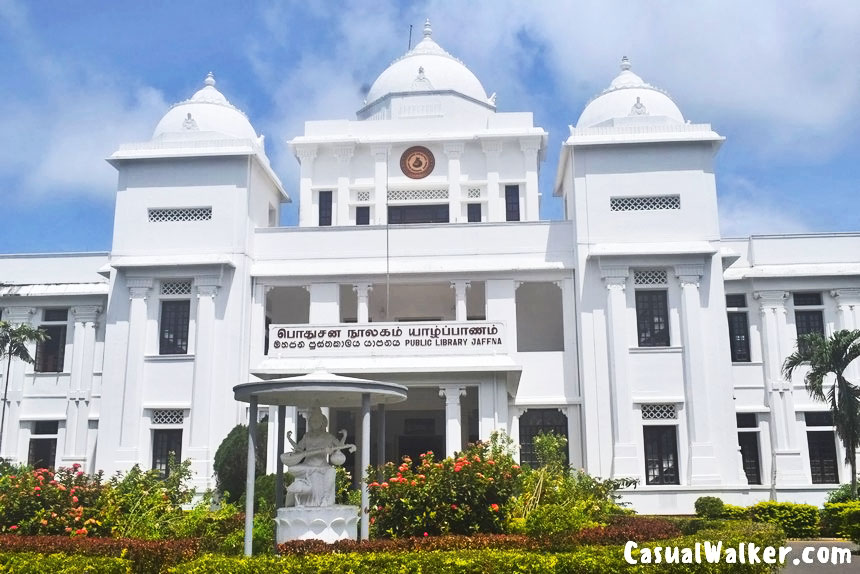
Architectural Features and Notable Statues
The reconstructed library showcases:
- Classical colonial architecture with modern amenities
- Three ornate domes representing cultural continuity
- Spacious reading halls with natural lighting
- Beautiful landscaped gardens surrounding the building
- Modern facilities including computer labs and audiovisual equipment
- Guests can wander leisurely through the library’s spacious, well-lit halls or unwind at the cozy café nestled at the back of the building.
Mobile Library Bus Brings Books to Jaffna Schools
A mobile library housed in a 42-seat bus operates under the Jaffna Public Library, bringing books and English learning resources directly to secondary schools throughout the region to enhance students access to reading materials.
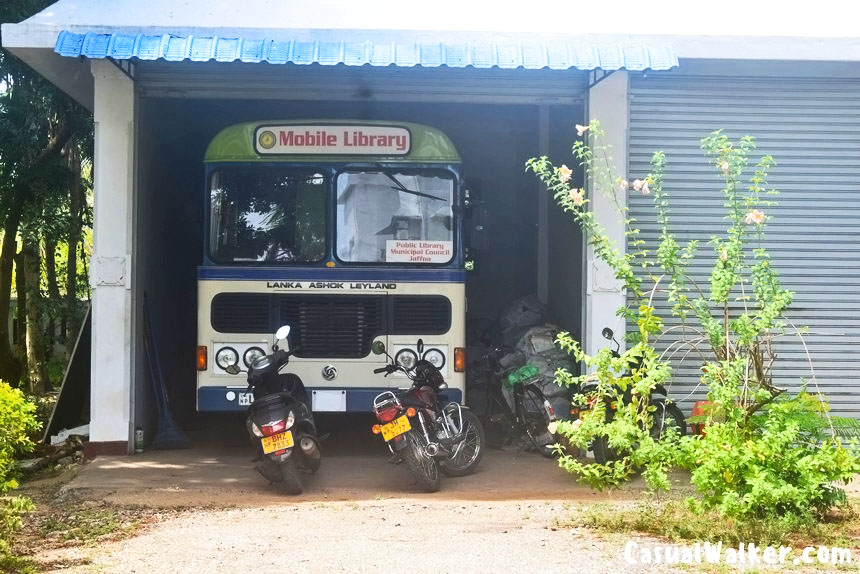
Prominent Statues and Cultural Symbols:
The Jaffna Public Library campus features several significant statues that reflect the institution’s dedication to knowledge, Tamil culture, and educational excellence.
Goddess Saraswati Statue
The most prominent is the statue of Goddess Saraswati, positioned majestically at the main entrance of the library building. This beautiful sculpture depicts Saraswati, the Hindu goddess of knowledge, wisdom, learning, and the arts, seated gracefully with her traditional attributes including the veena (musical instrument), lotus flower, and sacred books.
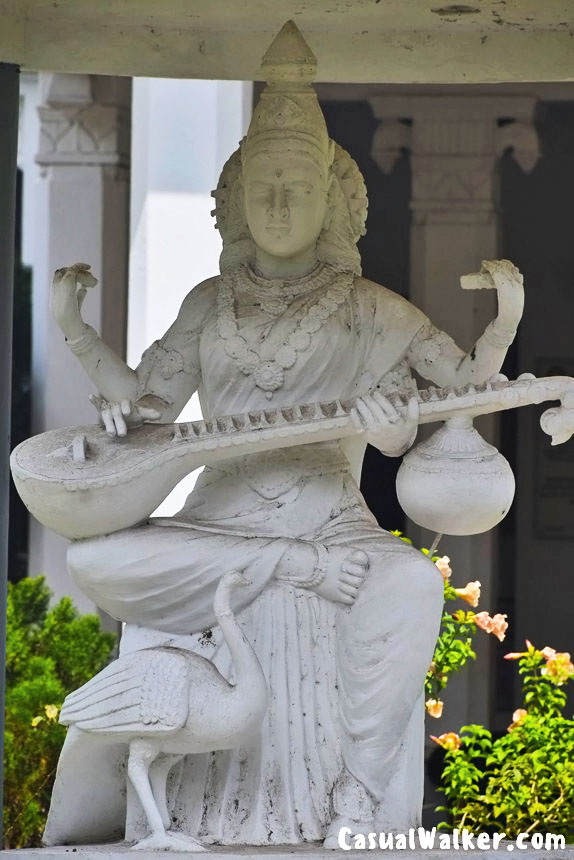
The statue serves as both a spiritual guardian of the library’s knowledge treasures and a cultural symbol representing the Tamil community’s reverence for education and scholarly pursuits.
Thiruvalluvar Statue
In front of the library entrance is the statue of Thiruvalluvar, the revered Tamil poet and philosopher who authored the timeless classic “Thirukkural”. This magnificent statue honors one of Tamil literature’s greatest contributors, whose ethical and philosophical teachings continue to guide Tamil society. Thiruvalluvar’s presence at the library entrance symbolizes the eternal connection between wisdom, literature, and moral values that the institution represents.
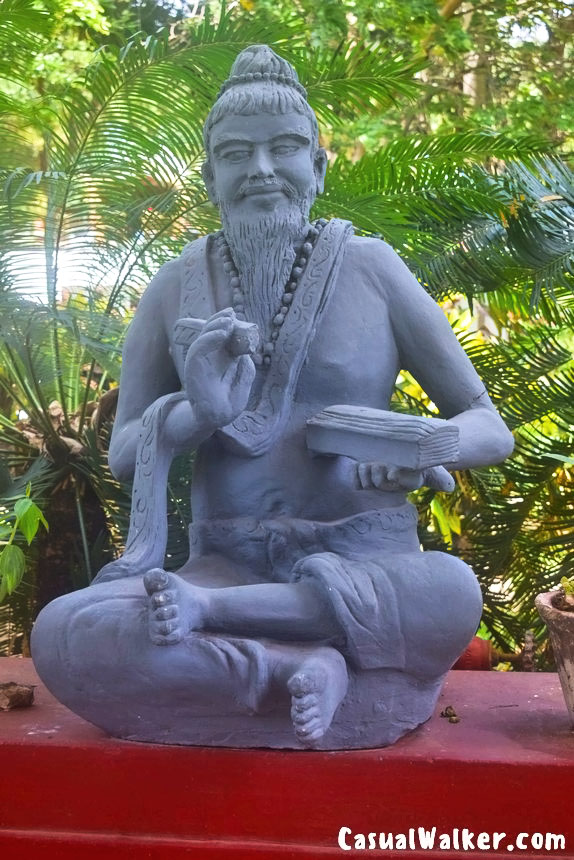
K.M. Chellappa Statue
The library campus honors key founding figures with commemorative statues, including a tribute to K.M. Chellappa, the visionary founder who established the library from his humble home collection in 1933. These statues not only beautify the campus but also serve as constant reminders of the library’s rich heritage, the importance of preserving Tamil intellectual traditions, and the individuals whose dedication made this institution possible. Visitors often pause at these statues to pay their respects before entering the library, making them integral parts of the cultural and spiritual experience of visiting this historic institution.
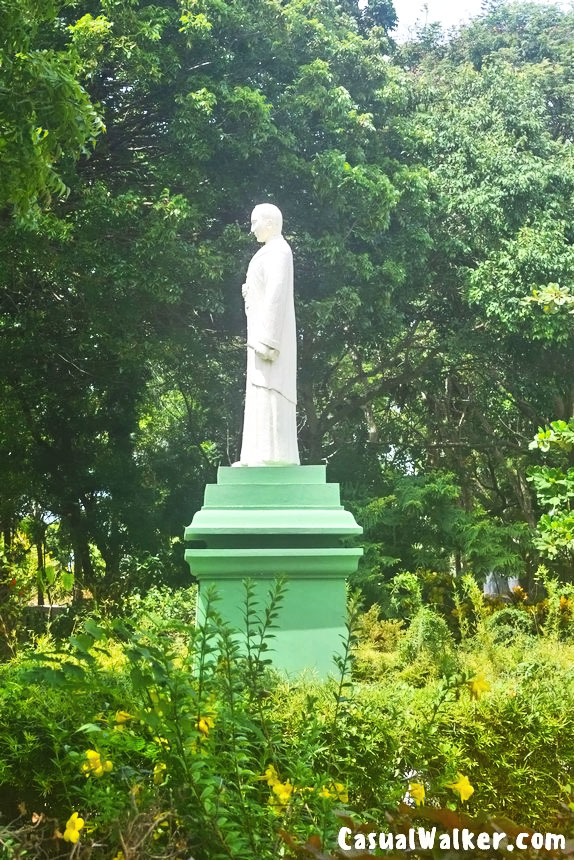
As a mark of cultural respect for this revered institution and in accordance with traditional Sri Lankan customs, all visitors are required to remove their footwear before entering the library building.
Indian Government Support & the Abdul Kalam Block – A Gesture of Solidarity
India’s Cultural Diplomacy Initiative
The Indian government played a crucial role in the library’s restoration through comprehensive support programs:
Book Donation Campaign
- Nationwide collection drive targeting 100,000 books
- Focus on Tamil-language literature from Tamil Nadu
- Coordination through the Directorate of Public Libraries, Chennai
The Indian Corner (2015)
In collaboration with the Indian High Commission in Colombo, the library established a dedicated “Indian Corner” featuring:
- Books on Indian history and culture
- Biographies of Indian leaders
- Tamil children’s literature
- Educational resources promoting Indo-Sri Lankan cultural ties
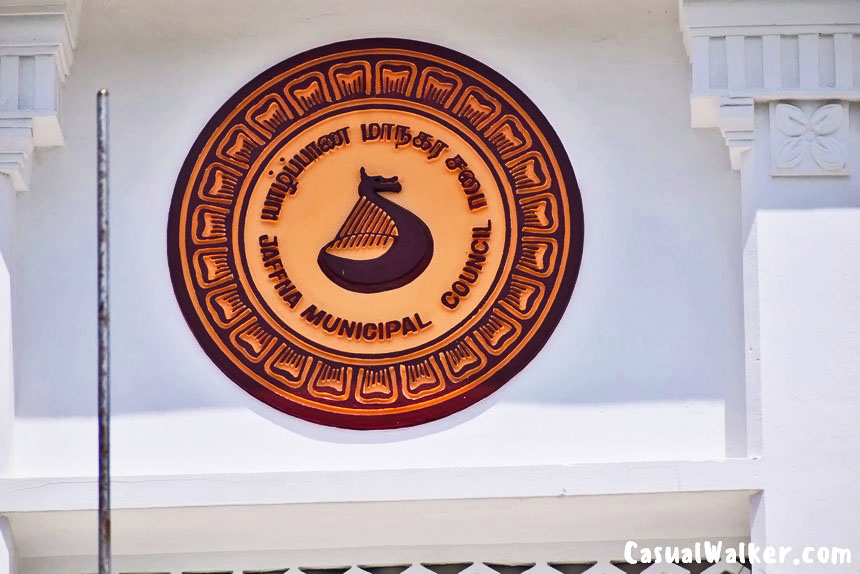
Abdul Kalam Block
This special section is named after Dr. A.P.J. Abdul Kalam, India’s beloved former President and scientist. The block represents the strong educational and cultural bonds between India and Sri Lanka’s Tamil community and houses:
- Scientific and technical literature
- Inspirational works by Dr. Kalam
- Educational resources promoting scientific temper
- Collaborative research materials
- Dr. A.P.J. Abdul Kalam’s statue was also erected at the entrance of this block to honor his legacy.
Modern Significance and Tourism
Since the war’s end in 2009, the Jaffna Public Library has emerged as:
- A major tourist attraction for visitors from southern Sri Lanka
- A symbol of reconciliation and cultural preservation
- An educational hub serving the Northern Province
- A research center for Tamil studies and Sri Lankan history
Visitor Guidelines for Jaffna Public Library
Visitors planning to explore the Jaffna Public Library should be aware of several important protocols and security measures that are strictly enforced to preserve the cultural sanctity and security of this historic institution. All personal belongings, including bags, backpacks, and purses, must be securely stored in the designated bag lockers located at the front entrance before entering the library premises.
Photography Restrictions
Photography enthusiasts should note that DSLR cameras and professional photography equipment are strictly prohibited inside the library building, and visitors wishing to capture the architectural beauty or interior spaces must obtain prior written permission from the library administration.
As a mark of cultural respect for this revered institution and in accordance with traditional Sri Lankan customs, all visitors are required to remove their footwear before entering the library building.
The Jaffna Public Library stands today not merely as a collection of books, but as a testament to the indomitable spirit of a community that refused to let their cultural flame be extinguished. Through Indian support, government initiatives, and community dedication, this institution has risen from ashes to become a beacon of hope, learning, and cultural preservation in Sri Lanka’s Northern Province.
Travel Tips for Jaffna Public Library / Yalpanam Public library in Jaffna, Sri Lanka
Address of Jaffna Public Library / Yalpanam Public library :
Jaffna Public Library
M266+VP2 – Clock Tower Road,
South Jaffna,
Northern Province, Sri Lanka
Open Timings: Library is open every day, but visiting hours are only on weekdays from 4:30 pm to 6:30 pm.
Phone Number: +94 212 226 028
Holidays: Monday & Public Holidays
How to reach Jaffna Public Library / Yalpanam Public library in Jaffna, Sri Lanka
Local Transportation in Jaffna
In Jaffna city, visitors can easily reach the library using three-wheelers – Tuk-tuks / Auto rickshaw, local buses, rental bicycles, or walking, as the library is centrally located near other major landmarks including the Jaffna Fort and Nallur Kandaswamy Temple.
By Bus
Sri Lanka Transport Board (SLTB) and private bus operators provide regular bus services from major cities to Jaffna. The Colombo-Jaffna highway route via the A9 highway is the most popular, taking approximately 6-7 hours depending on traffic conditions. Luxury air-conditioned buses and semi-luxury coaches operate from Colombo Central Bus Stand (Pettah) and Kadawatha Bus Terminal. Upon arrival at Jaffna Central Bus Station, the library is within walking distance or a short tuk-tuk ride to Clock Tower Road.
By Train
Sri Lanka Railways operates the “Yal Devi” express train service from Colombo Fort Railway Station to Jaffna Railway Station. This scenic journey takes approximately 8-9 hours and offers passengers beautiful views of Sri Lanka’s countryside. The train runs daily with both air-conditioned and regular compartments available. From Jaffna Railway Station, the library is easily accessible by three-wheeler (tuk-tuk), taxi, or local bus, with a travel time of approximately 10-15 minutes to Clock Tower Road.
By Air Travel
The most convenient way to reach Jaffna is through Jaffna International Airport (JAF), located approximately 16 kilometers from the city center. SriLankan Airlines operates regular domestic flights from Bandaranaike International Airport (Colombo) to Jaffna, with a flight duration of approximately 1 hour and 15 minutes. From Jaffna Airport, visitors can take a taxi or airport shuttle service directly to the library, which takes about 25-30 minutes by road.
Also check our Similar Interesting Photo Stories



